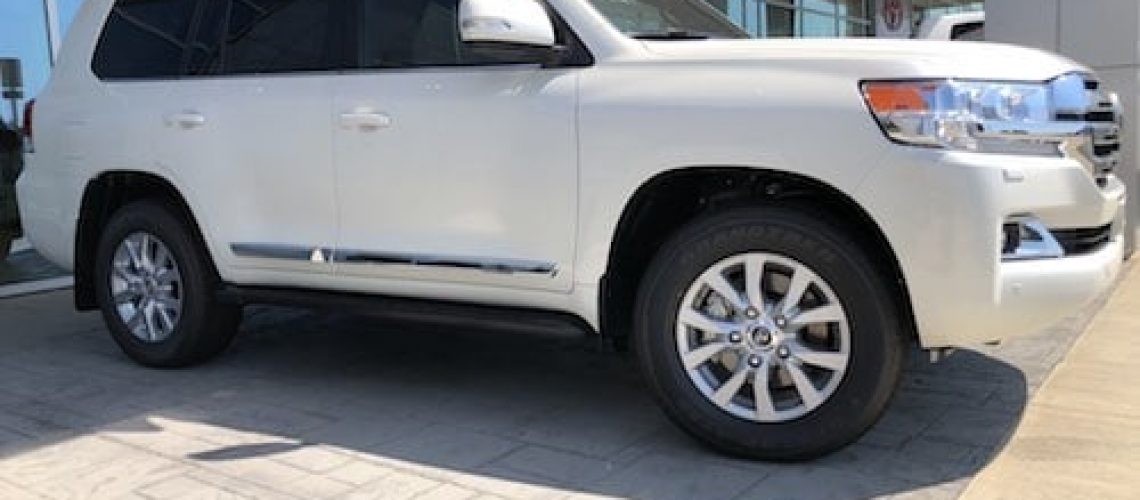The tax reform act of 2017 made several changes to the tax code that can offer big benefits to small and medium sized businesses. An area of notable improvement is when it comes to buying SUVs and computer equipment as business expenses.
The new guidance direct from the IRS website reads as follows:
A taxpayer may elect to expense the cost of any section 179 property and deduct it in the year the property is placed in service. The new law increased the maximum deduction from $500,000 to $1 million. It also increased the phase-out threshold from $2 million to $2.5 million.
What this means in a nutshell is the annual deduction limits have been doubled from their previous values beginning in 2018 onward. This allows a small business to drastically lower its taxable income while receiving a tangible benefit.
Section 179 allows a small business to drastically lower its taxable income while receiving a tangible benefit.
Ron Henry Click to Tweet
Just what is this Section 179 thing and, as small business owners, what are detailed examples of how it’s useful for us?
Section 179
In previous years, when your business bought qualifying equipment, it typically wrote it off a little at a time through depreciation. For example, if your company spent $100,000 on computer equipment, it would usually write off small chunks of that $100,000 expense annually. It could take as long as 10 years to fully depreciate the equipment if written off in amounts of $10,000 per year.
This is certainly better than nothing. But it would be far sweeter to be able to fully depreciate that $100,000 in the year your company purchased it. And that’s exactly what Section 179 does – it allows your business to write off the entire purchase price of qualifying equipment for the current tax year.
Sounds pretty awesome right? Next you probably want to know which types of purchases qualify for this tax benefit. If so, read on.
Qualifying Property
This list of property allowed by Section 179 is the following:
- Equipment (machines, etc.) purchased for business use
- Tangible personal property used in business
- Business Vehicles with a gross vehicle weight in excess of 6,000 lbs
- Computers
- Computer “Off-the-Shelf” Software
- Office Furniture
- Office Equipment
- Property attached to your building that is not a structural component of the building (i.e.: a printing press, large manufacturing tools and equipment)
- Partial Business Use (equipment that is purchased for business use and personal use: generally, your deduction will be based on the percentage of time you use the equipment for business purposes).
- Certain improvements to existing non-residential buildings: fire suppression, alarms and security systems, HVAC, and roofing.
As you can see the list is pretty exhaustive. The areas we’ll focus on are the computer equipment and business vehicle sections. Those are the sections my CPA has helped me take advantage of in my small business.
Computer Equipment
Section 179 of the tax code allows you to write off up to $1,000,000 in computer and equipment related expenses. While I didn’t get anywhere near that number, I was able to purchase new networking and storage equipment for my business last year.
Altogether, the NAS (Network Attached Storage), wireless equipment and firewall total up to approximately $12,000. It’s equipment the business needed to purchase anyways, so it’s nice to also realize a tax deduction in the process.
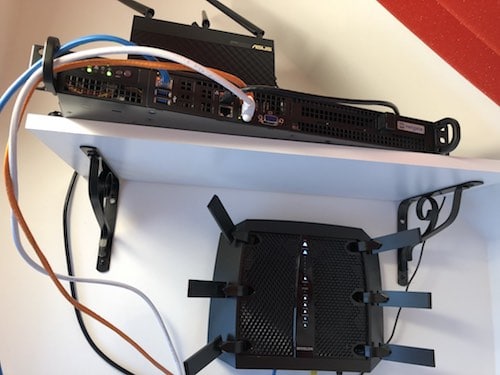

Buying Vehicles in Your Business
This is the area that most people probably think about when it comes to section 179. It’s important to realize that there are two classifications of vehicles that are mentioned under this particular tax code – light passenger vehicles and SUVs / trucks that weigh more than 6,000 lbs.
A key requirement is that the vehicle must be used for business at least 50% of the time. The amount you can depreciate is reduced by the percentage of the time the vehicle is used for personal use.
Let’s use the example of a potential $10,000 write-off. If the vehicle is used 75% of the time for business purposes, you’d only be able to write-off $7,500 of the $10,000. For most small business owners, it’s practically impossible to have 100% of the vehicle use allocated to business. Even though I have other vehicles to drive, my CPA still recommended using 93 – 95% as the upper end for business use allocation. That percentage better reflects reality and will also reduce the likelihood of raising red flags with the IRS.
There isn’t a one size fits all answer to this one. Check with your CPA and have them crunch the numbers based on your business before giving that Land Cruiser a new home.
Light Passenger Vehicles
For passenger vehicles that are used at least 50% of time for business purposes, the deduction is $11,160 for cars and $11,560 for trucks and vans. Given the current cost of most cars and trucks, you’re likely only getting a partial write-off by using a passenger vehicle in your business.
SUVs and Trucks
When we get into SUVs and trucks over 6,000 lbs, this is where things get interesting. Section 179 allows your business to depreciate 100% of the price of the vehicle in the first year.
Again, your vehicle has to weigh more than 6,000 lbs to receive this special treatment. It also important to note that the SUV / truck has to also weigh less than 14,000 lbs. So, the effective range is between 6,000 lbs and 14,000 lbs. Finding a vehicle under upper limit isn’t usually an issue for most people.
When I was doing the research for this article, I went by my local Toyota dealership to get some examples for you. I was fortunate enough to find two offerings – a Toyota Land Cruiser and a Chevy Tahoe.
An easy way to see if the SUV / Truck meets the weight requirements is to examine the sticker the manufacturers are required to place on them. You can usually find the sticker inside or near the driver’s side door jamb.
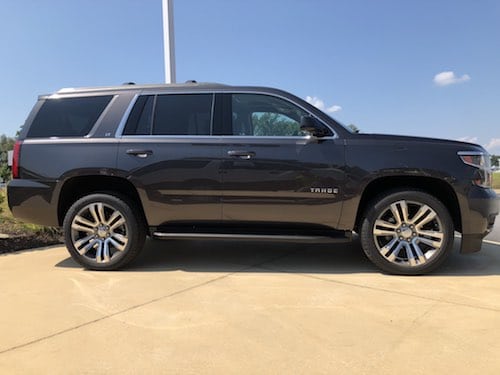
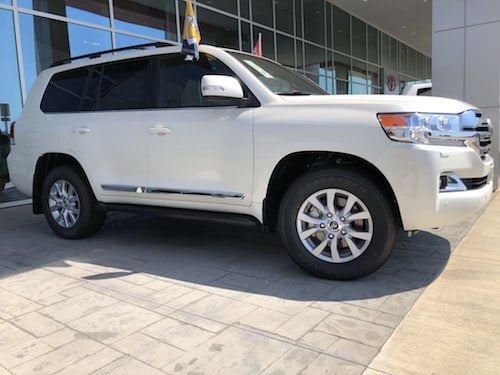
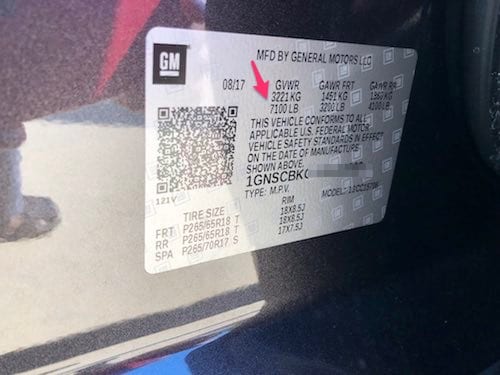
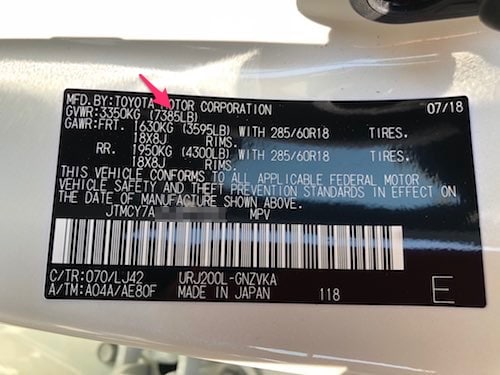
Following is a list of 2018 / 2019 SUVs and trucks that have a gross weight exceeding 6,000 lbs. This list isn’t exhaustive but it’s the best I could find. If the vehicle you’re considering isn’t listed here, you can always verify by checking the sticker in the door jamb. The sticker will look similar to what I showed in the images above.
2018 / 2019 Section 179 Vehicle List
| Manufacturer | Model | GVWR |
|---|---|---|
| Audi | Audit Q7 3.0T Premium | 6479 |
| BMW | X5 | 6063 |
| Buick | Enclave | 6411 |
| Cadillac | Escalade | 7100 |
| Cadillac | Escalade ESV | 7300 |
| Chevrolet | Express 2500 | 8600 |
| Chevrolet | Express 3500 | 9600 |
| Chevrolet | Silverado 1500 | 6900 |
| Chevrolet | Silverado 2500HD | 9500 |
| Chevrolet | Silverado 3500HD | 13,025 |
| Chevrolet | Suburban | 7300 |
| Chevrolet | Tahoe | 7100 |
| Chevrolet | Traverse | 6411 |
| Dodge | Grand Caravan | 6050 |
| Ford | Expedition | 7260 |
| Ford | Expedition EL | 7500 |
| Ford | Explorer | 6160 |
| Ford | F-150 | 6010 |
| Ford | F-250 | 9950 |
| Ford | F-350 | 10000 |
| Ford | F-450 | 14000 |
| GMC | Acadia | 6001 |
| GMC | Savana 2500 | 8600 |
| GMC | Sierra 1500 | 6900 |
| GMC | Sierra 2500HD | 9500 |
| GMC | Sierra 3500HD | 13400 |
| GMC | Yukon | 7100 |
| GMC | Yukon XL | 7300 |
| Honda | Odyssey | 6019 |
| Infiniti | QX80 | 7300 |
| Jeep | Grand Cherokee | 6500 |
| Land Rover | Range Rover | 7033 |
| Lexus | LX570 | 7385 |
| Lincoln | Navigator | 7500 |
| Lincoln | Navigator L | 7700 |
| Mercedes | G-Class | 7058 |
| Mercedes | GL-Class | 7165 |
| Mercedes | Sprinter | 11030 |
| Nissan | Armada | 7300 |
| Nissan | NV Passenger | 9520 |
| Nissan | Titan | 7300 |
| Porsche | Cayenne | 6195 |
| Ram | ProMaster 1500 Cargo | 8550 |
| Ram | ProMaster 2500 Cargo | 8900 |
| Ram | ProMaster 3500 Cargo | 9350 |
| Ram | Ram 1500 | 8550 |
| Ram | Ram 2500 | 9000 |
| Ram | Ram 3500 | 10100 |
| Toyota | 4Runner | 6100 |
| Toyota | Land Cruiser | 7385 |
| Toyota | Sequoia | 7100 |
Takeaways
Section 179 is a great example of how our nation’s tax code is written to benefit business owners. Being able to drastically lower the tax bill of your business while also acquiring equipment you need is really tough to pass up. Hopefully this post has given you some ideas on how you can take advantage of it.
The one caveat to keep in mind is that the benefits of section 179 are only available to business owners.
Section 179 is a great example of how our nation’s tax code is written to benefit business owners.
Ron Henry Click to Tweet
How to Start Your Online Business
Have you ever considered starting an online business? If so, I’ve put together a great resource page, that lists all of the tools and products I use to build and manage this blog. A big benefit to using the same hosting provider I do is that I’ve assembled a quick and easy writeup explaining how to get your site installed and running. If I can help out, don’t hesitate to reach out to me.
Also, if you’d like additional information about Section 179, I highly recommend that you visit the IRS page on the topic. It’s an amazing resource on this topic.
Do you have any additional tips on how to make use of the tax code to benefit small business owners? Let me know in the comments below!
A great FREE tool I personally use for tracking my portfolio is Personal Capital. When you click this link to sign up for your free account, both you and I will receive $20. Every little bit helps right?

